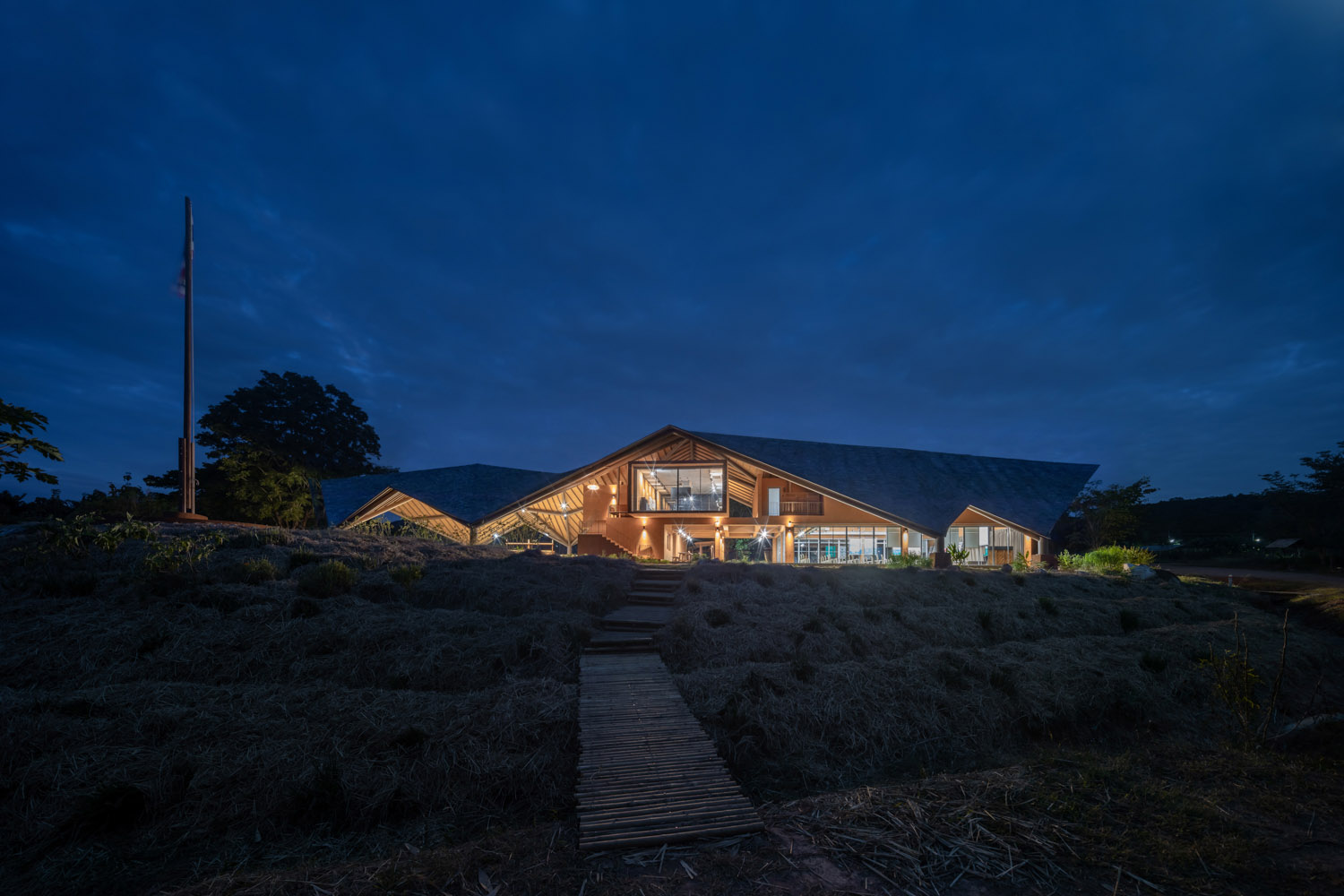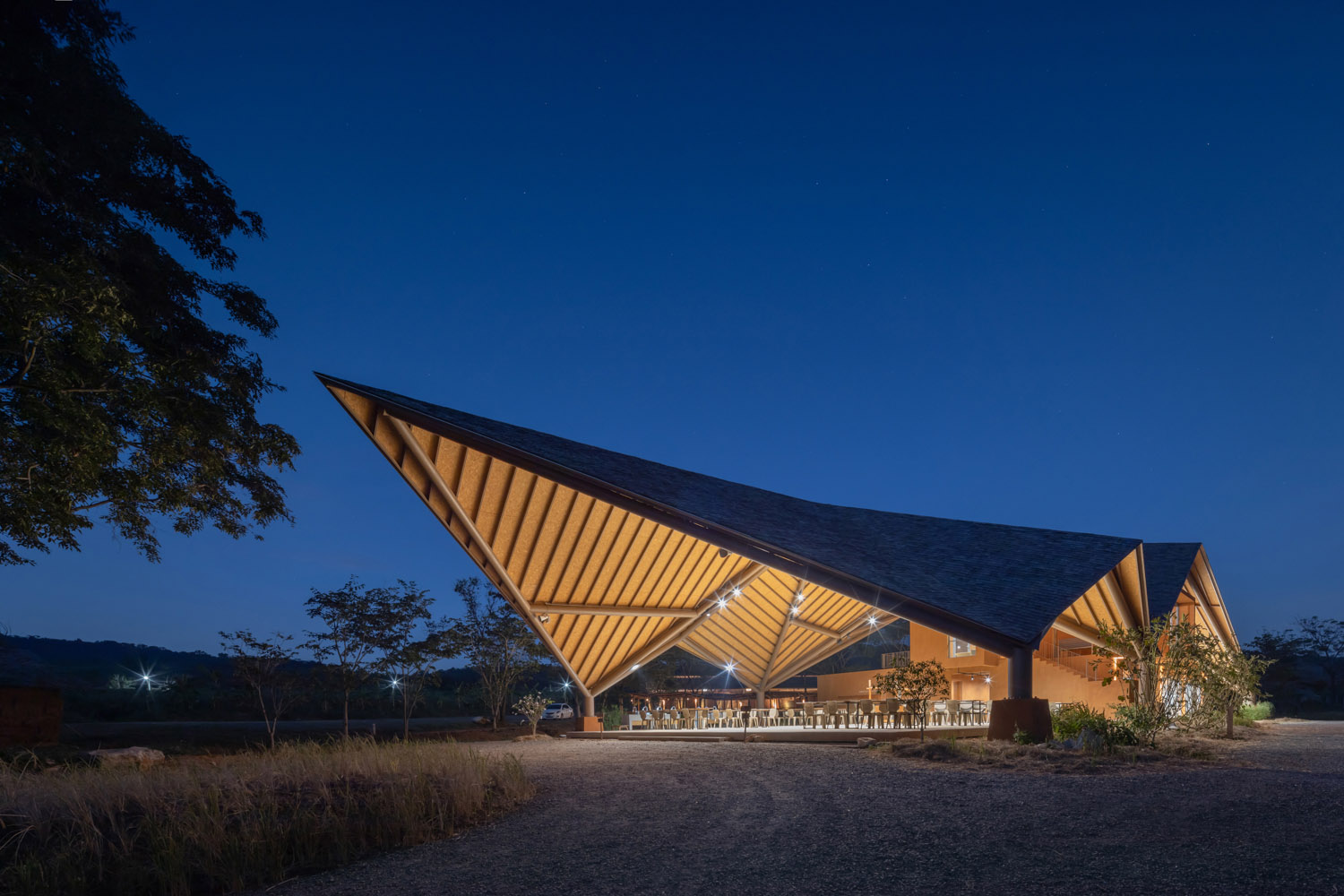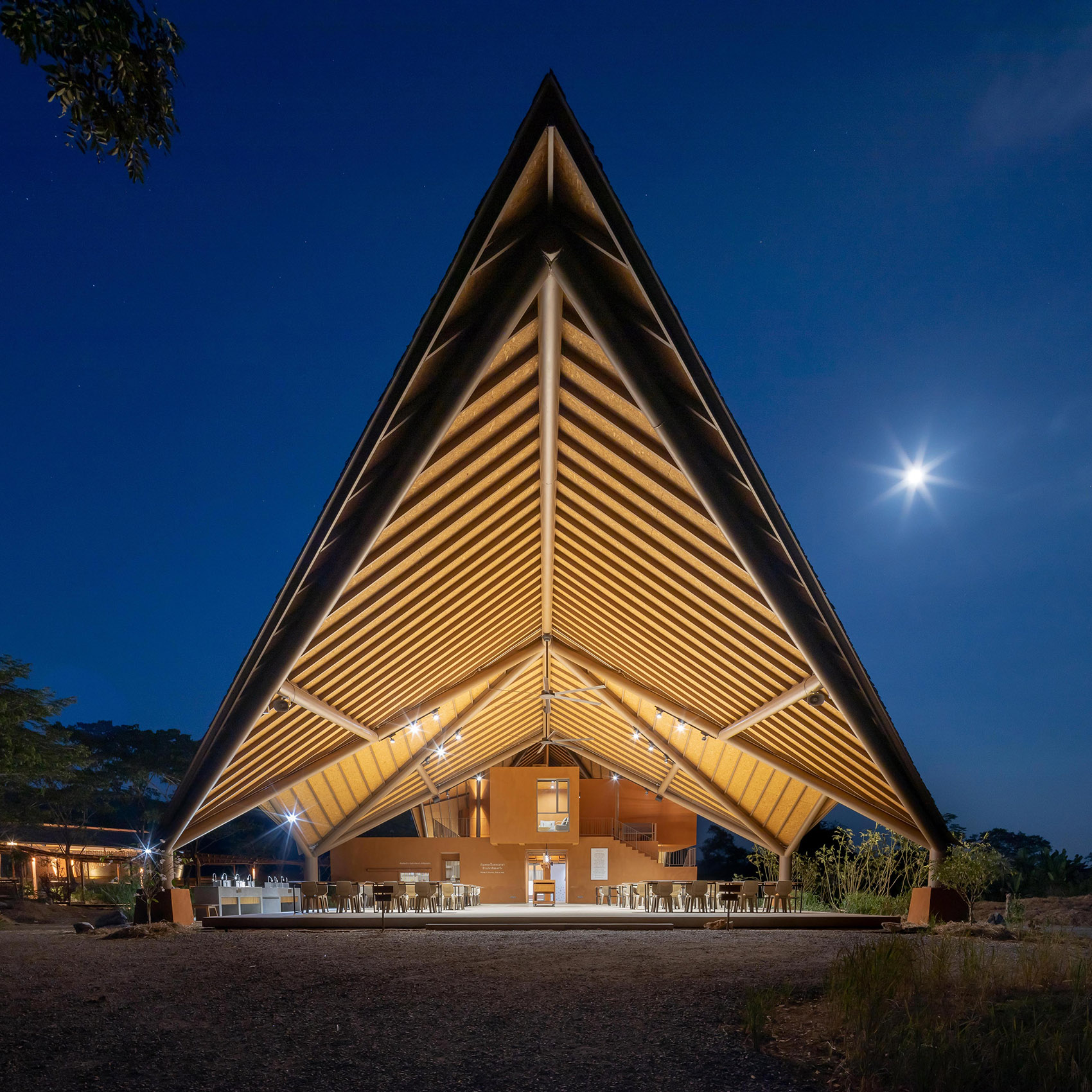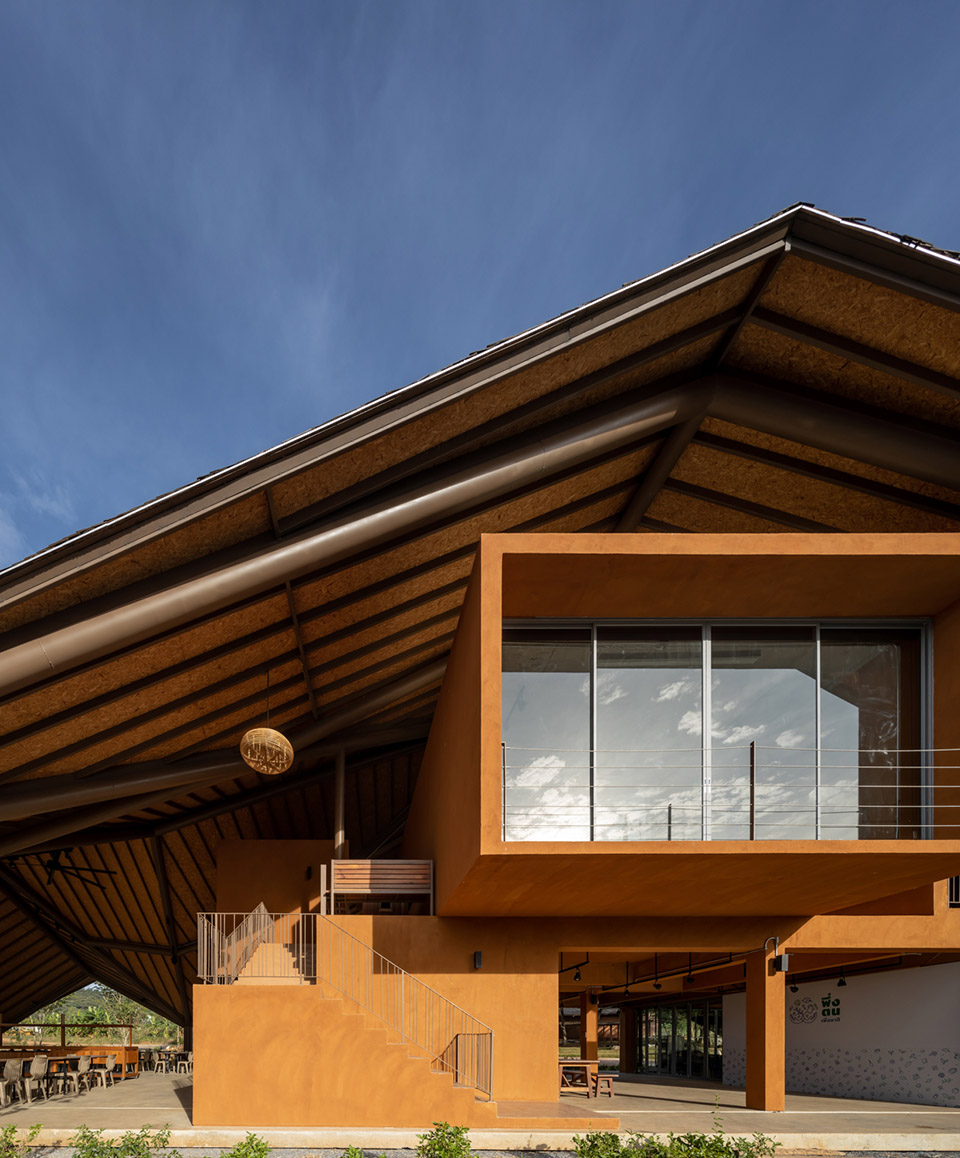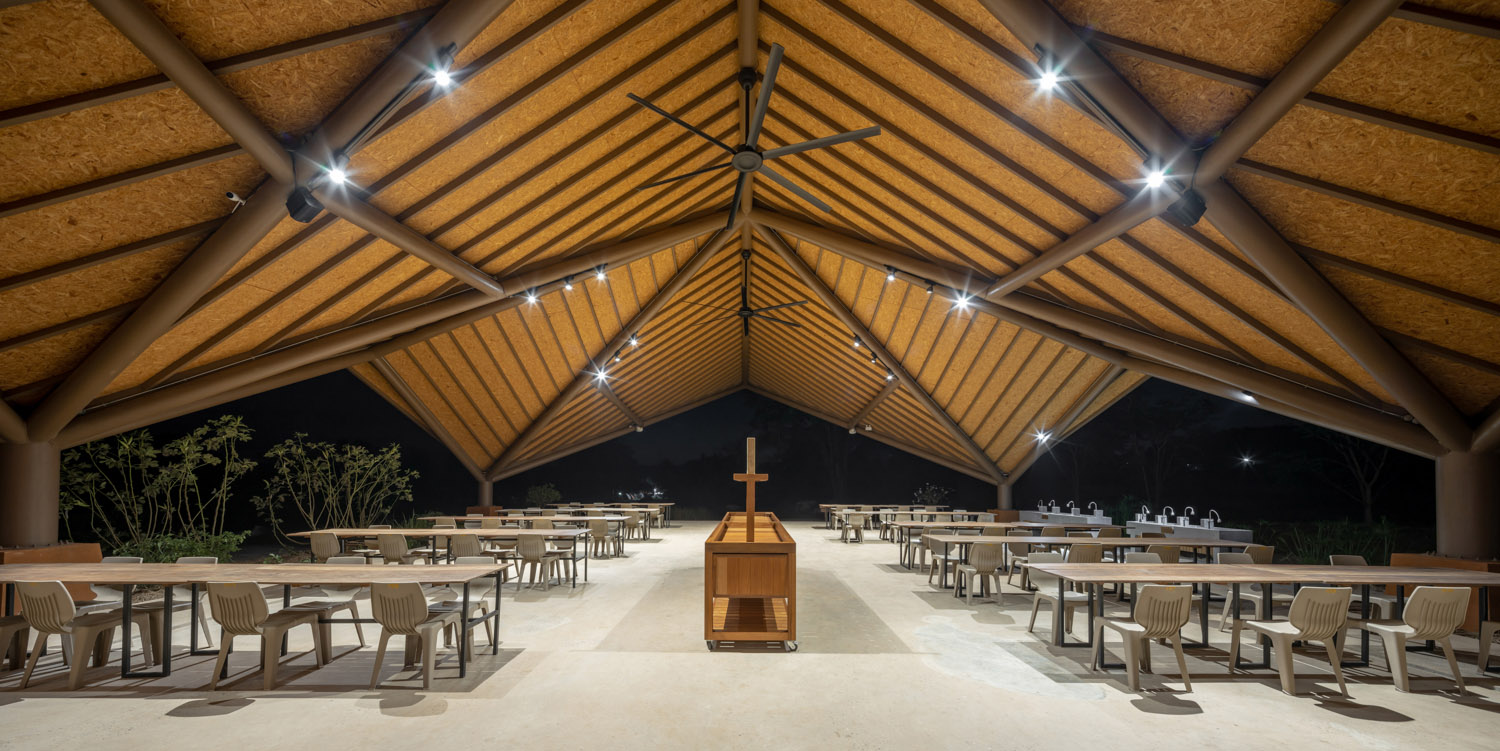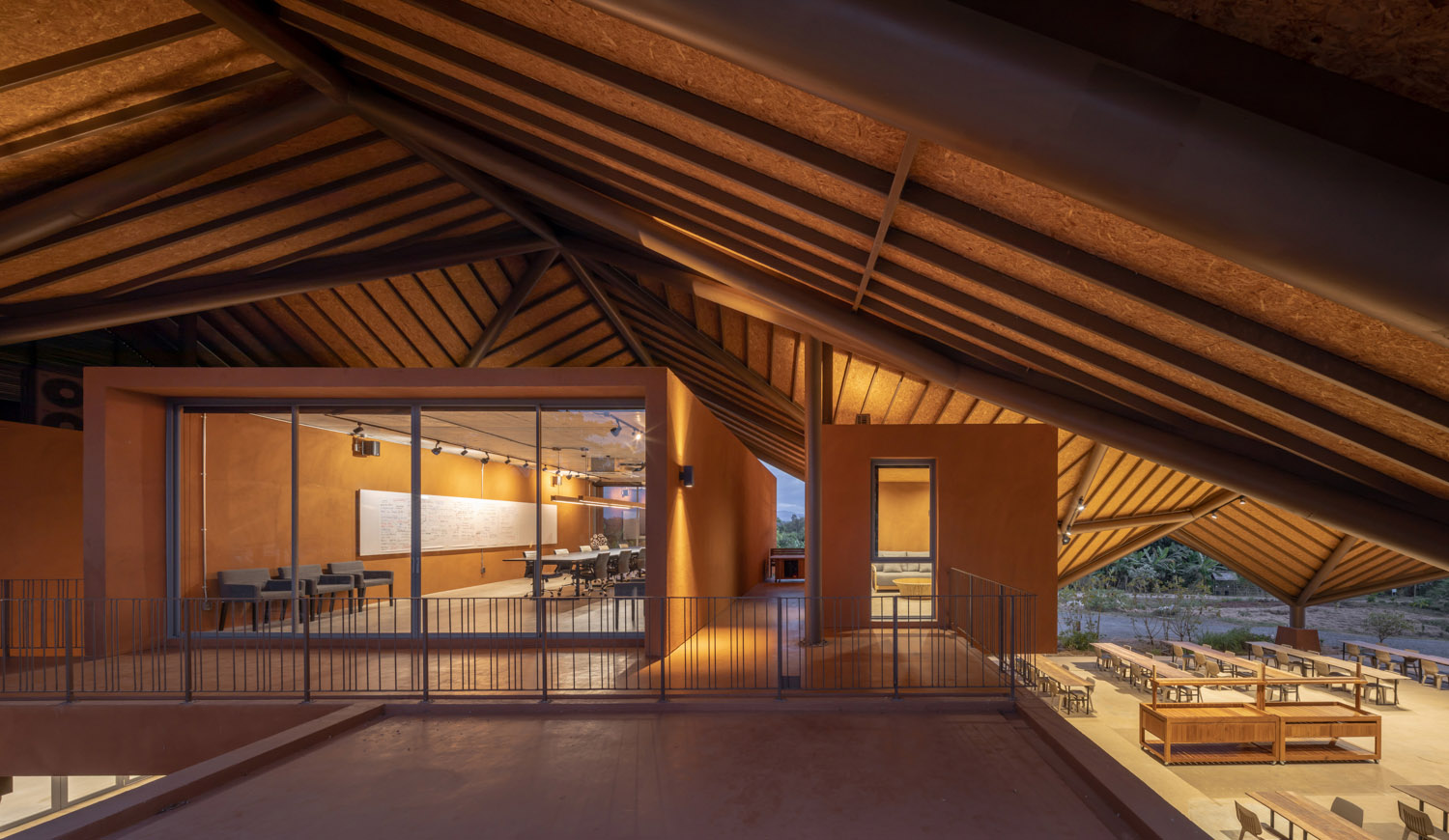过去几十年,前所未有的科技高速进步让世界面临着越来越多的挑战;社会和经济加速解体;自然灾害危害重重;价值观和文化激烈冲突;近年爆发的疫情更是给人们的生命健康带来了巨大威胁。
在如此严重的国家乃至世界危机面前,泰王普美篷于1974年提出的“充足经济哲学”获得关注,被视作带领国家走向包容可持续发展的希望灯塔。该理论的基础建立在“充分的思考可以增强人类的智慧和道德能力,从而应对不可预知的改变和威胁”这一信念之上。
▼建筑外观,external view of the building ©Ketsiree Wongwan
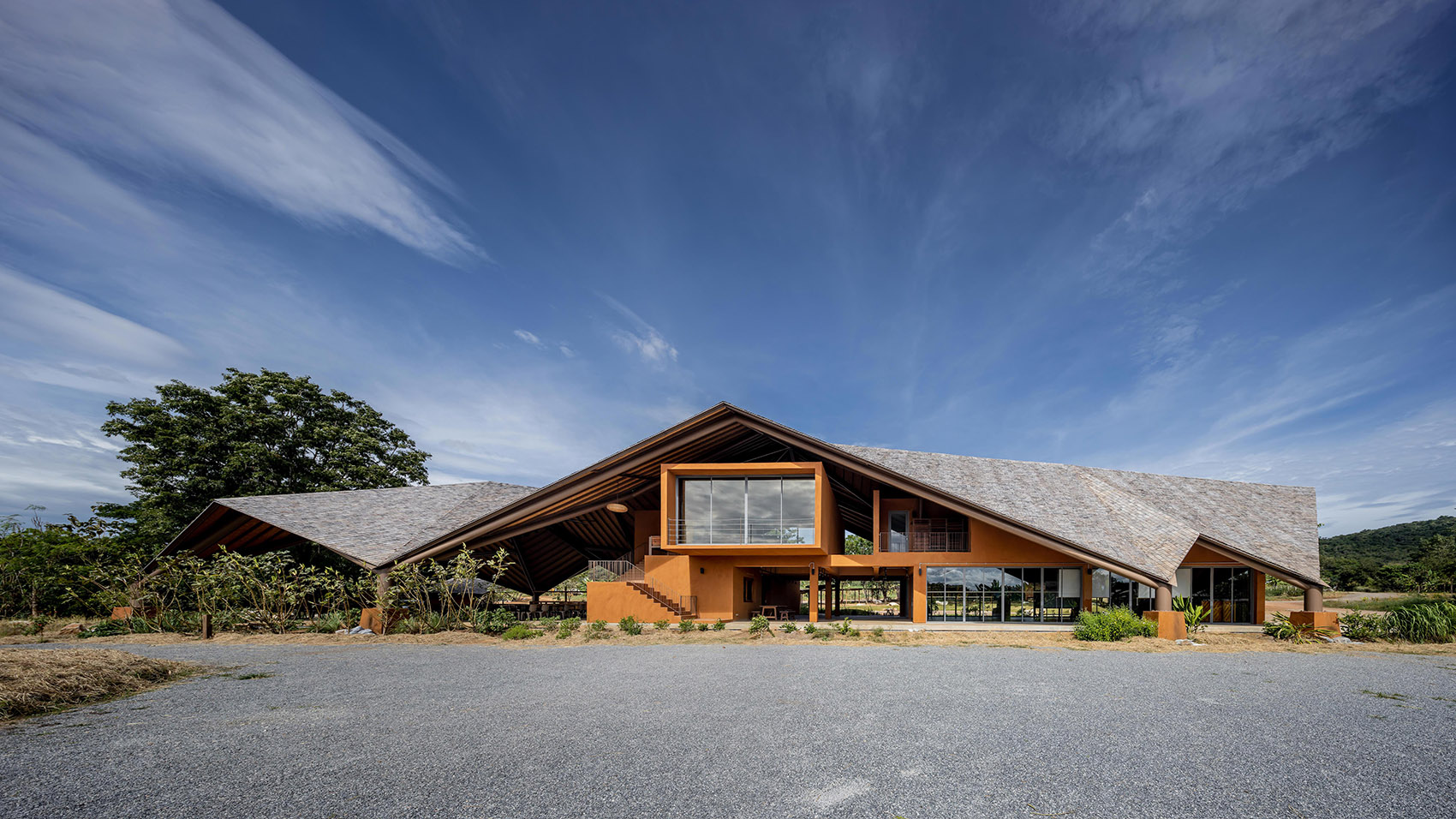
Over the past decades, the world has encountered increasing challenges resulting from unprecedented rapid rates of technological advancements, increasing social and economic disparities, dangers from natural disasters, conflicting values and cultures and more recently, life-threatening pandemics.
Amidst such national and global crisis, “Sufficiency Economic Philosophy” elaborated by His Majesty King Bhumibol Adulyadej in 1974 has gained recognition as the beacon of hope guiding the nation towards an Inclusive and Sustainable Growth Model. The philosophy is based on the conviction that sufficiency thinking will strengthen human capabilities with wisdom, morality and immunities to cope with the unforeseeable changes and threats.
▼设计草图,design sketch ©Vin Varavarn Architects


PANNAR充足经济和农业学习中心的建造目标是向泰国人民宣传国王的充足经济哲学,激发他们的思考。项目位于呵叻的一片14英亩的土地上,这里曾是一片干旱荒芜的多石地区,通过新农业模型转变成了包含稻田、生态保护区、蔬菜花园、果林、通用树林以及动物农场的丰饶区域。
The project ‘PANNAR Sufficiency Economic and Agriculture Learning Center’ is established with the aim to inspire and disseminate the King’s Sufficiency Economic Philosophy to the Thai people. The project is located in Nakhon-Ratchasima on a 14 acres land which had been transformed through the New Agriculture Model from arid and rocky deserted areas to rice fields, reservoirs, vegetables gardens, groves of fruit and general usage trees, and areas for animal farming.
▼鸟瞰,项目位于农田中,aerial view of the project located on a farm land ©Ketsiree Wongwan
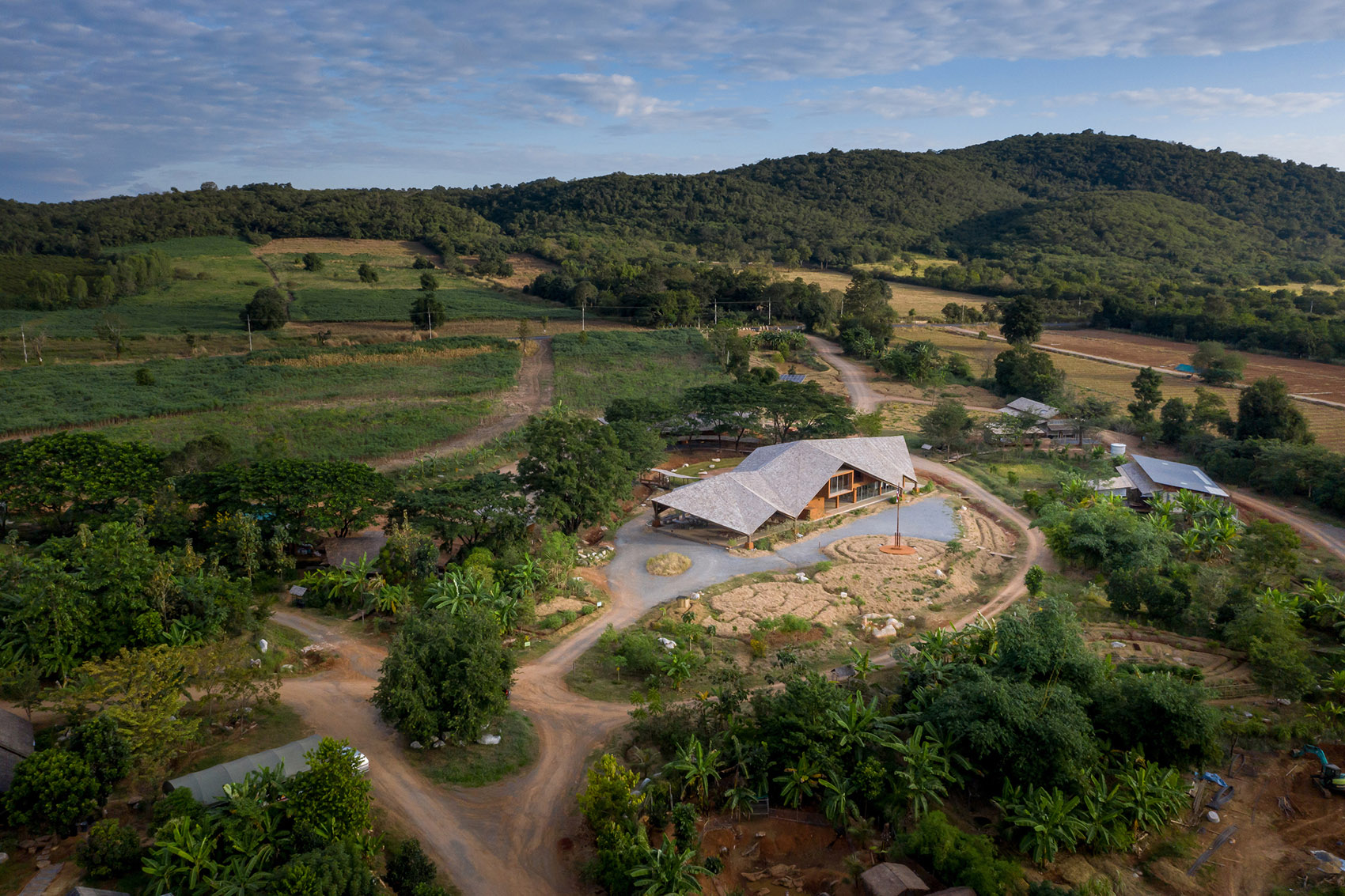
▼远景外观,external view of the building from a distance ©Ketsiree Wongwan

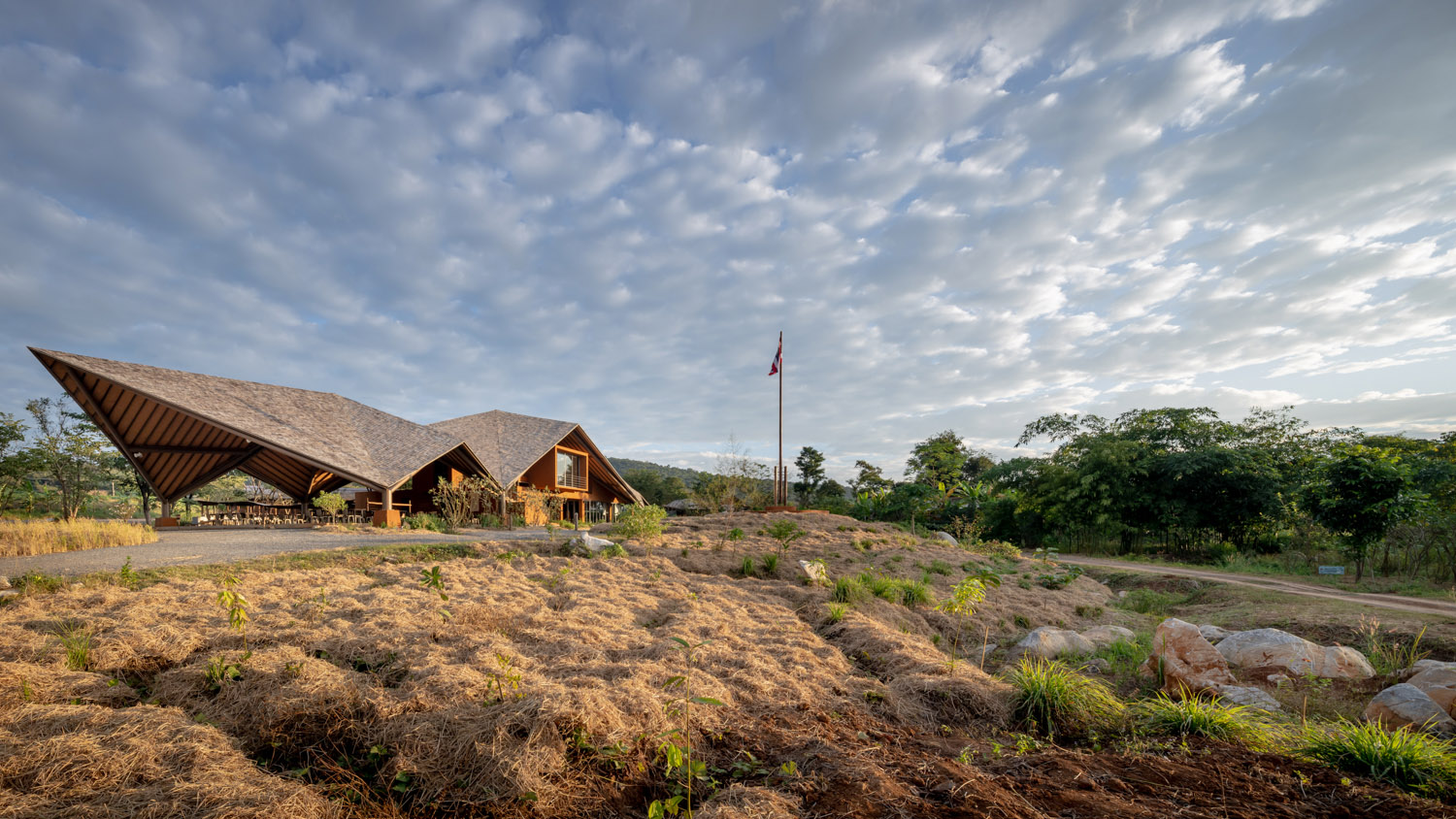
活动中心是项目的主体建筑,为两层,可以容纳最多一百人进行不同活动。一层设有接待大厅、培训室和工作间、大餐厅和厨房。二层包含员工的办公室和会议室、控制室、以及为受邀的教员和专家准备的各种设施。
The main buildings in the project, The Activity Center, is a two-story building, designed to accommodate up to 100 people in a variety of functions. The first floor provides areas for lobby (reception), rooms for seminars and workshops, large canteen, and a kitchen. While the second floor contains offices and meeting spaces for staff, control room and facilities for invited trainers and resource persons.
▼分解轴测图,exploded axonometric ©Vin Varavarn Architects
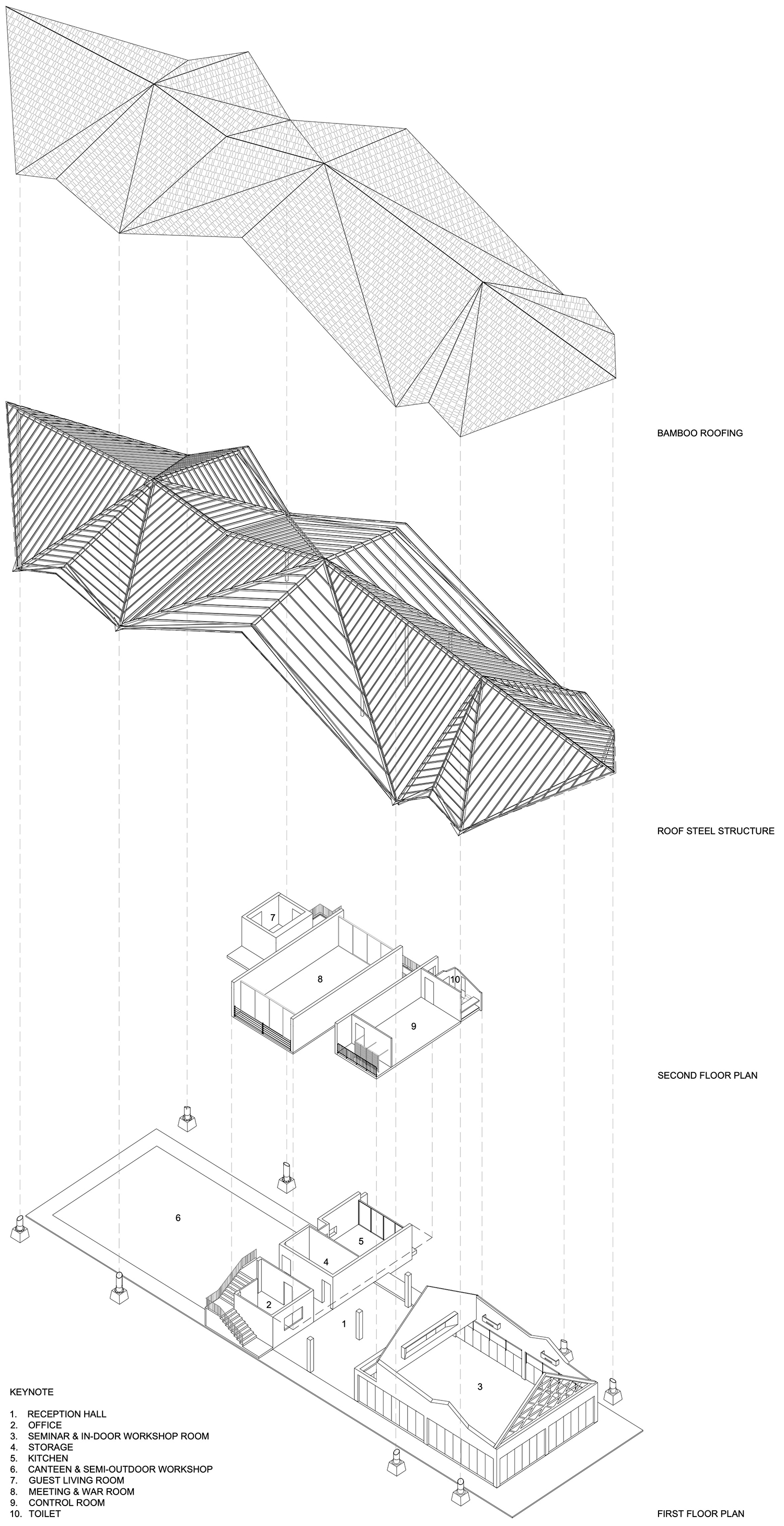
在设计的时候,建筑师需要探寻充足经济哲学的精髓与建筑的关系,特别是在建筑是应该遵循乡村竹屋的传统理念、还是应该采用临时棚屋这个问题上。经过与多位股东的讨论,建筑师得以运用当地的工艺和材料,使其适应现代设计的需求,创造一座富有吸引力的、符合当下生活方式且坚固耐久的建筑,同时与环境实现和谐。
In designing the buildings for the project, the architects were challenged to explore the essence of Sufficiency Economic Philosophy as related to architecture, especially whether the buildings must conform to traditional concepts of rural dwellings of bamboo huts or temporary shacks. After discussions with various stakeholders, the architects were able to demonstrate that local craftsmanship and local materials can become involved and transformed to create modern designs which are attractive, well suited for present day ways of life, durable as well as achieving harmony with the environment.
▼屋顶下设置丰富的空间,various spaces under the roof ©Ketsiree Wongwan
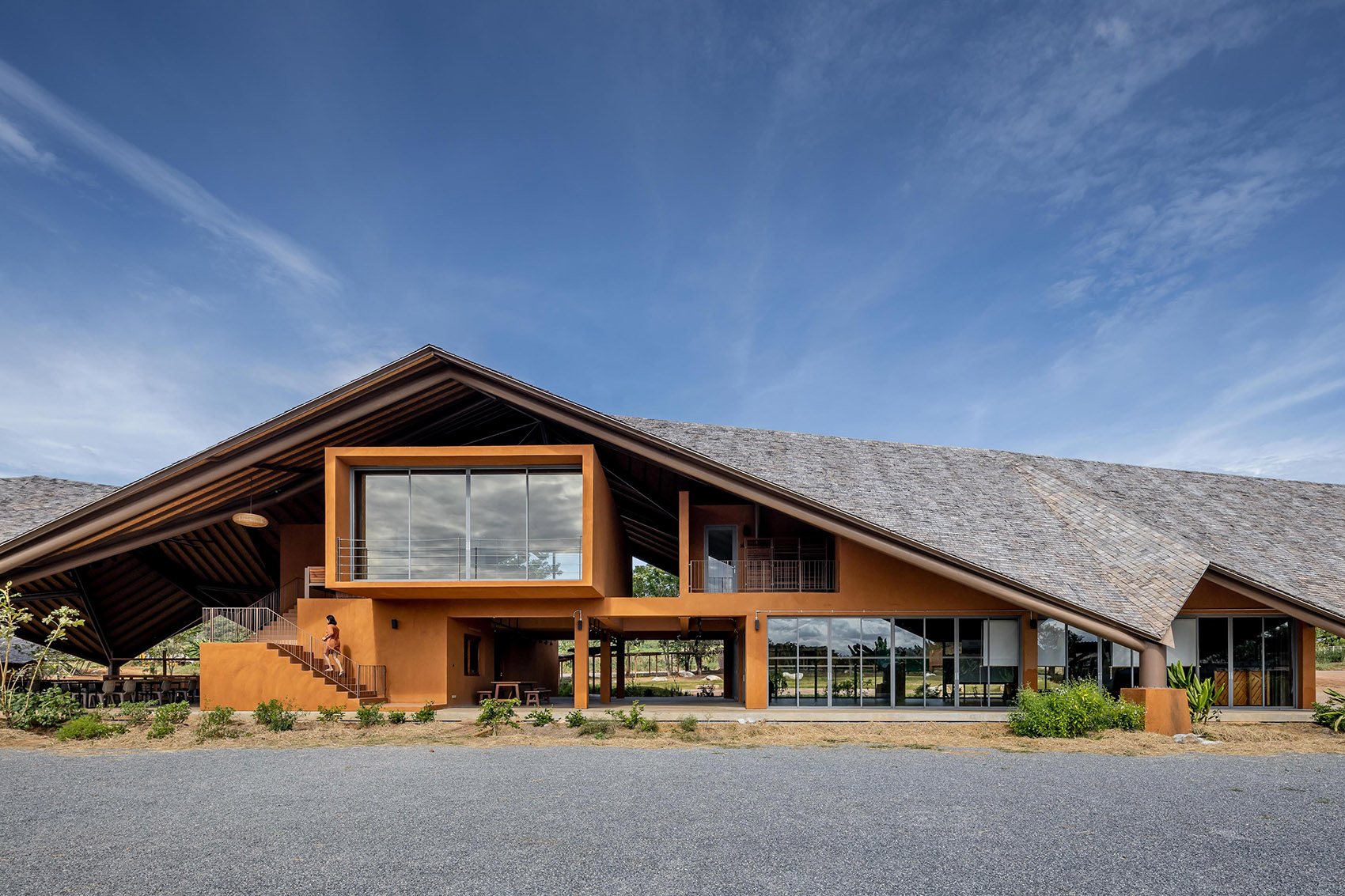
▼立面近景,closer view to the facade ©Ketsiree Wongwan

▼错落的功能体块,staggered volumes with different functions ©Ketsiree Wongwan

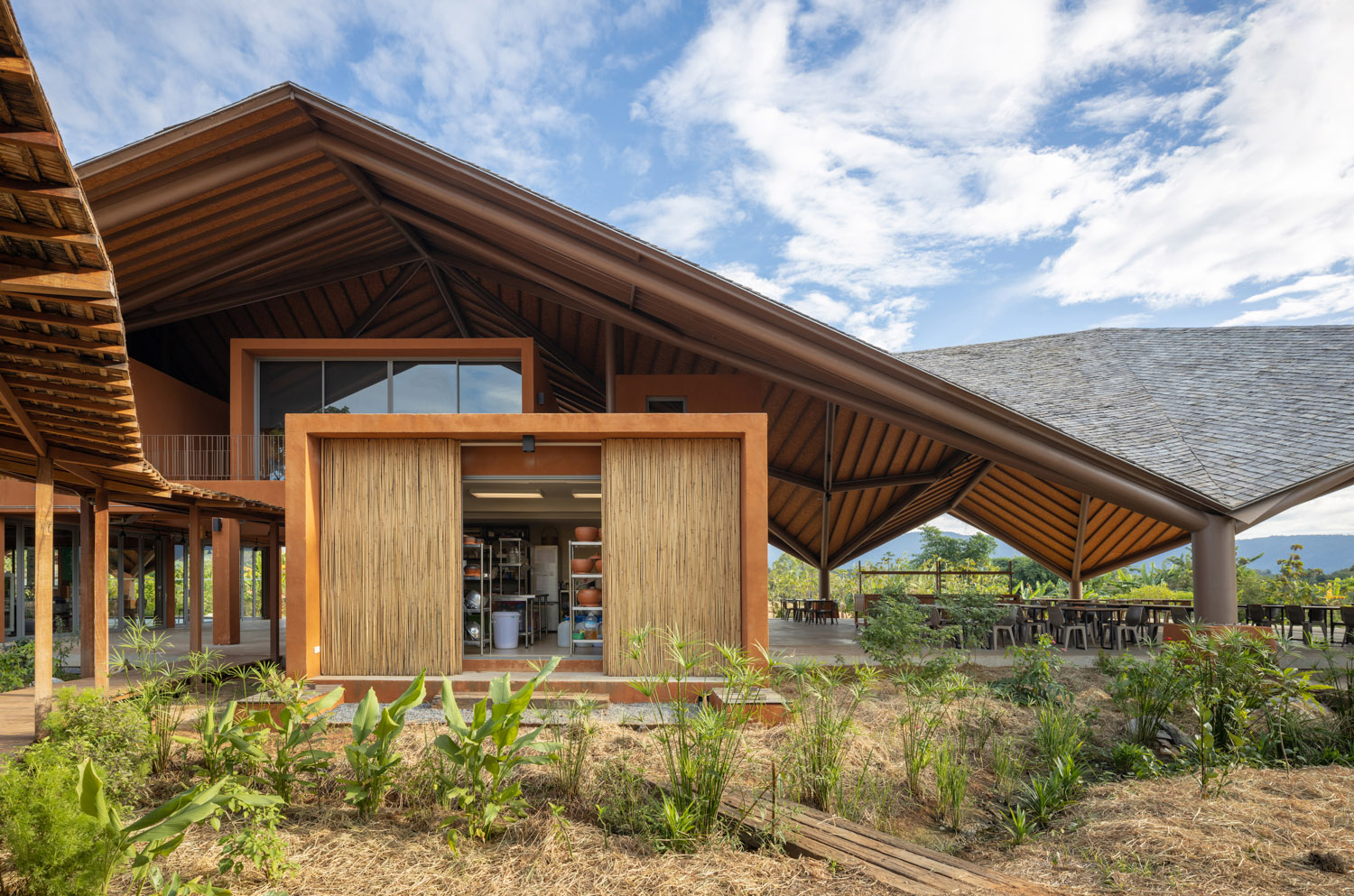
▼传统材料与现代设计相结合,combine traditional materials with modern designs ©Ketsiree Wongwan
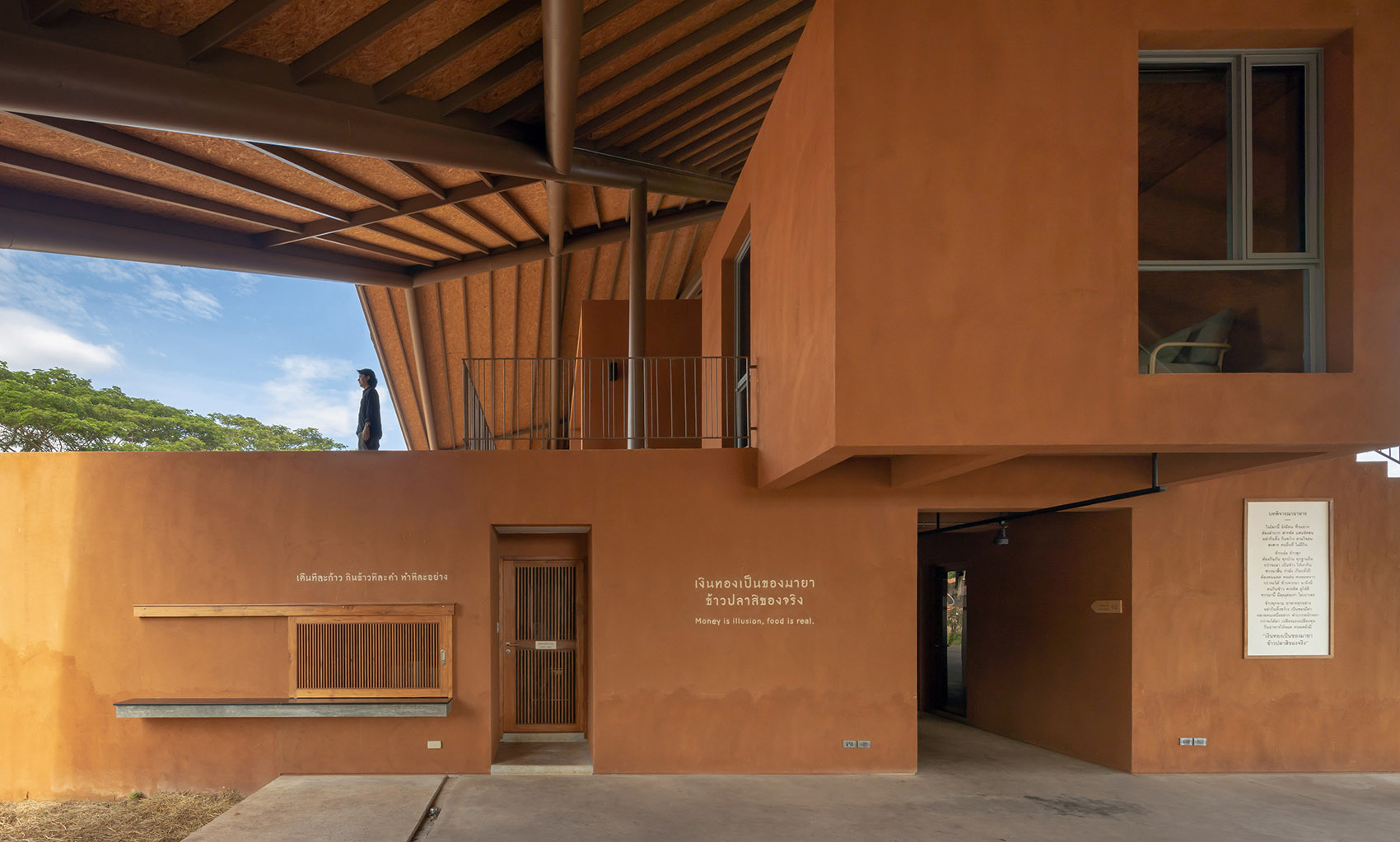
▼底层通道,passage on the first floor ©Ketsiree Wongwan

▼二层平台,platform on the second floor ©Ketsiree Wongwan
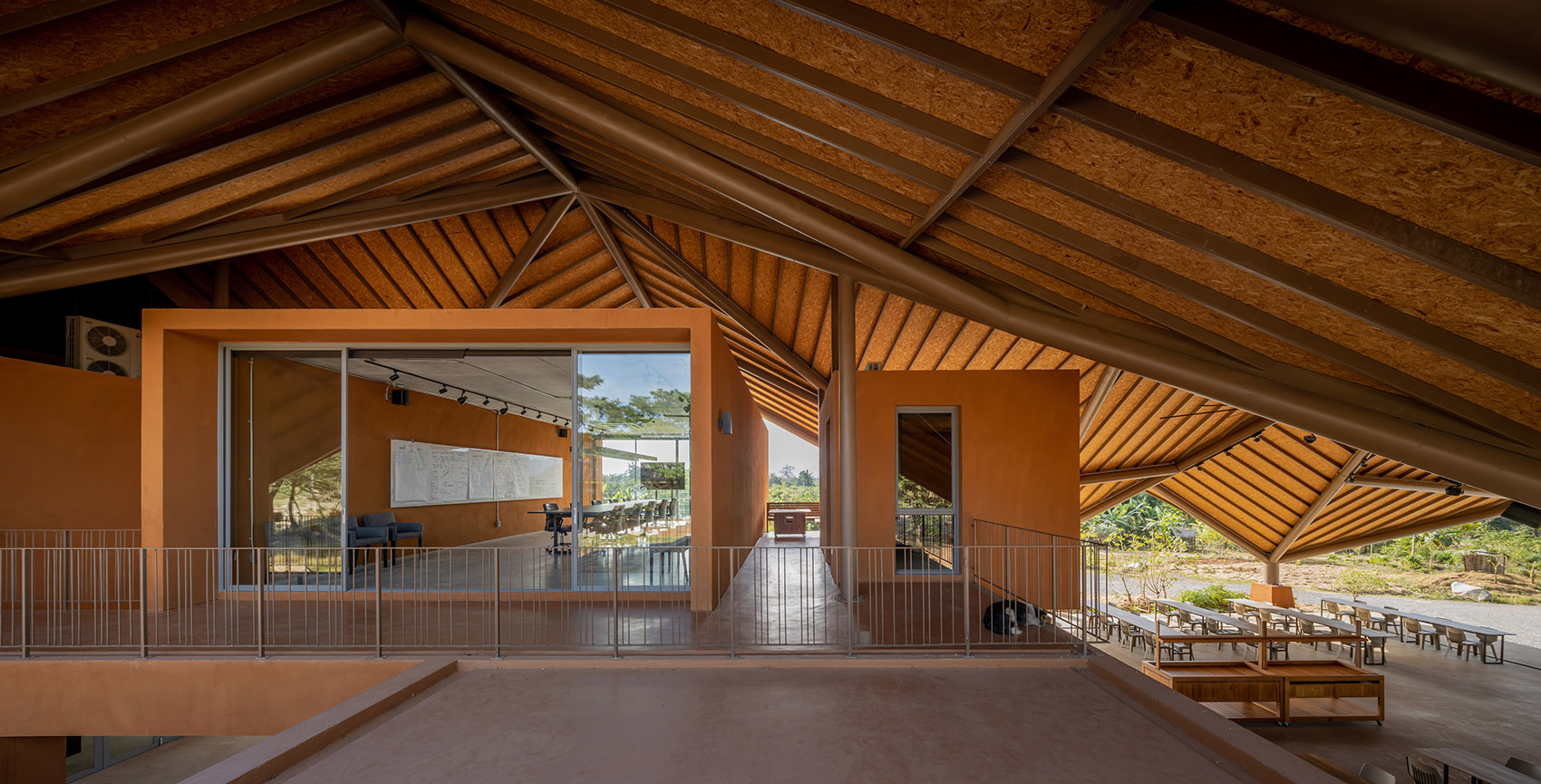
▼一层多功能空间,flexible space on the first floor ©Ketsiree Wongwan
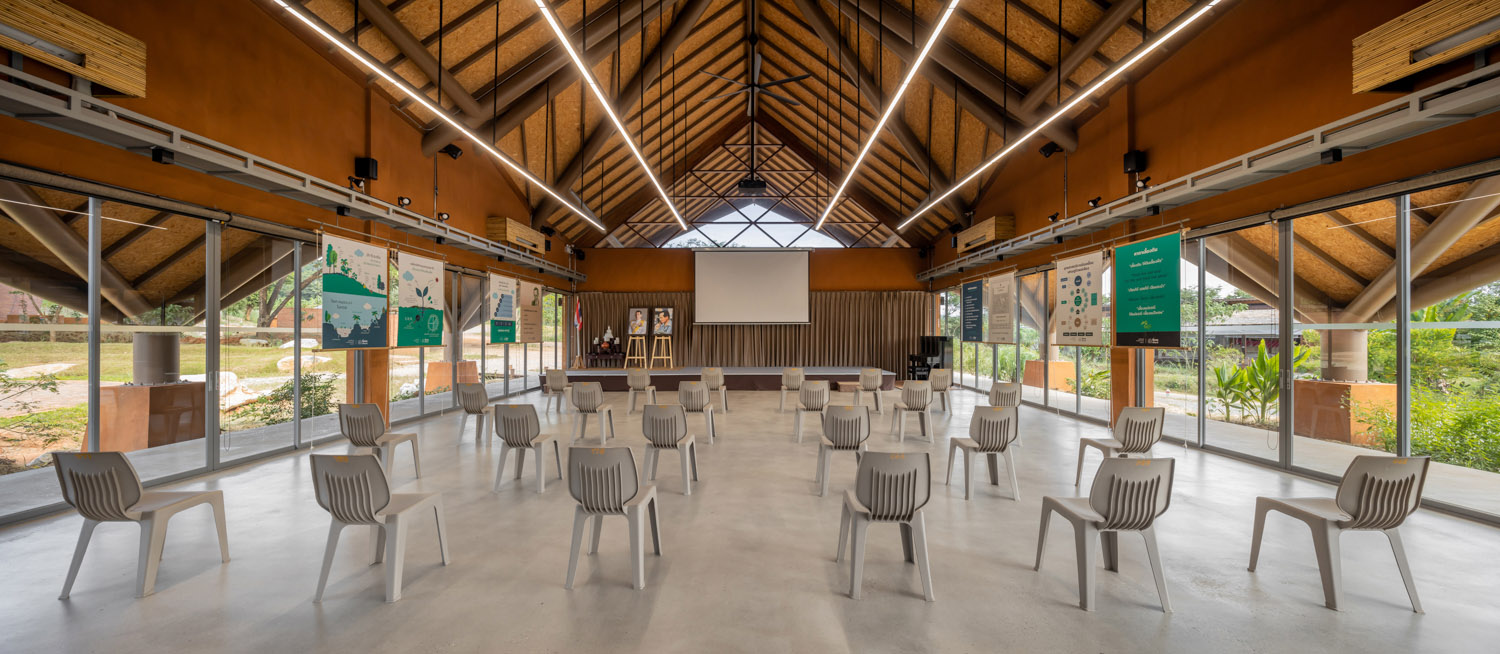
▼二层会议室,meeting room on the second floor ©Ketsiree Wongwan
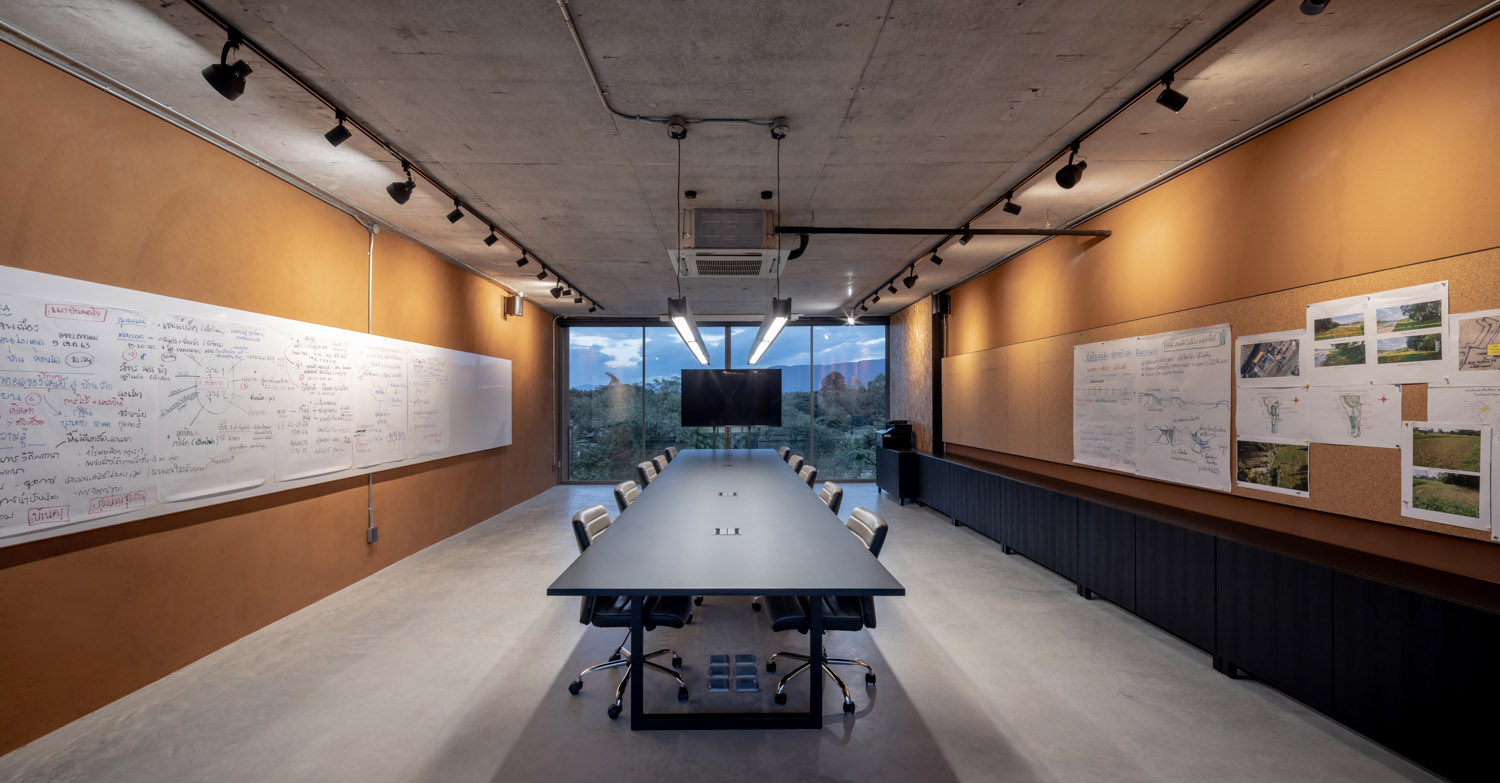
在广阔的农田中,活动中心是一座地标。它被设计成了一座宽敞而开放的凉亭,拥有自然的采光和通风,功能灵活多变。巨大醒目的屋顶由当地生长的竹子制成,可以将雨水收集排放到建筑四周的小水渠中,进而重新引导水分流向土地中的其他区域,最终抵达天然蓄水池,为旱季做储备。墙面采用天然的土壤色,是结合当地土壤和工匠技巧的实验成果,通过改造当地现有的材料和资源以适应现代用途,进一步强化了“充足的思考和观念模式”。
The activity center is placed as the landmark among the vast agriculture fields, It is designed as a large and open Pavilion to facilitate flexible usage of functions with natural lights and natural ventilation. The expansive and prominent roof made from locally grown bamboos helps to collect and drain rainwater towards small canals surrounding the building and in turn, redirect the water to feed other areas of the land before reaching the natural reservoirs for usage during the drought season.The natural color earthen walls, resulting from an experiment with local craftsmen’s skills and local soil further enhance “sufficiency thinking and mindset” in adapting locally available materials and capabilities for modern usage.
▼顶视图,巨大的屋顶,top view of the large roof ©Ketsiree Wongwan
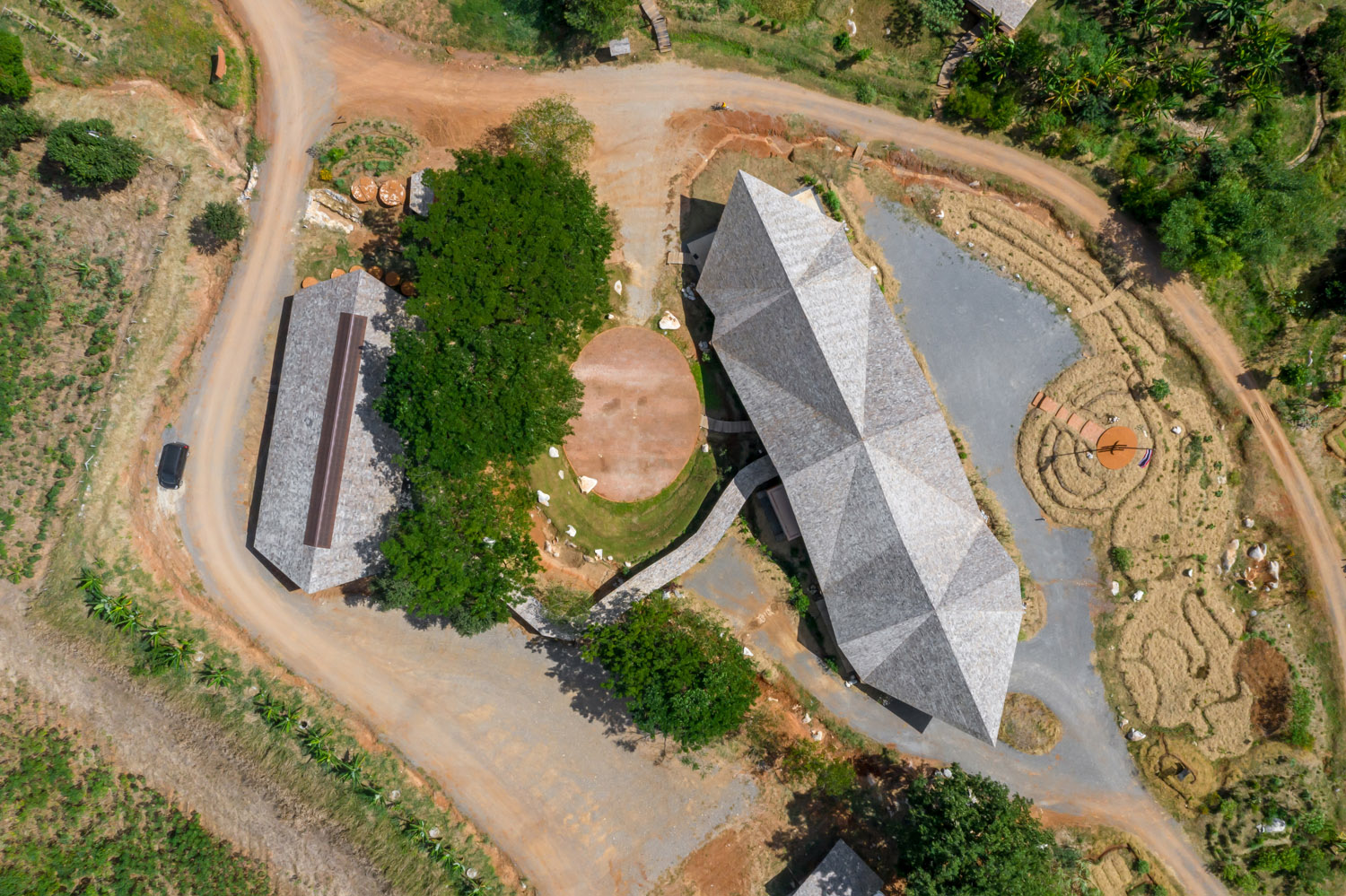
▼屋顶可以帮助收集和排放雨水,the roof helps to collect and drainage the rainwater ©Ketsiree Wongwan

▼屋顶细部,roof details ©Ketsiree Wongwan

▼屋顶下的室外活动空间,outdoor activity space under the roof ©Ketsiree Wongwan
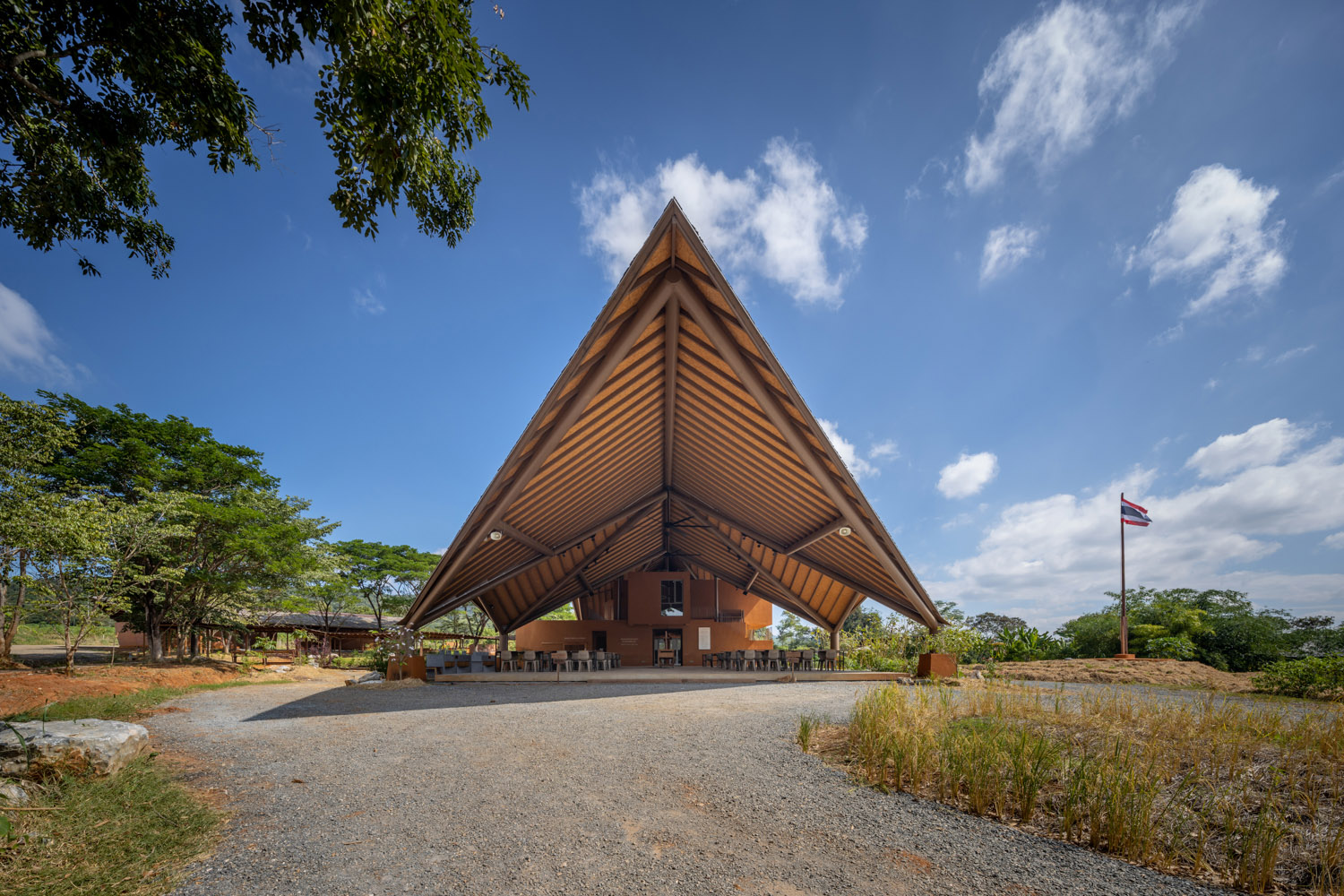
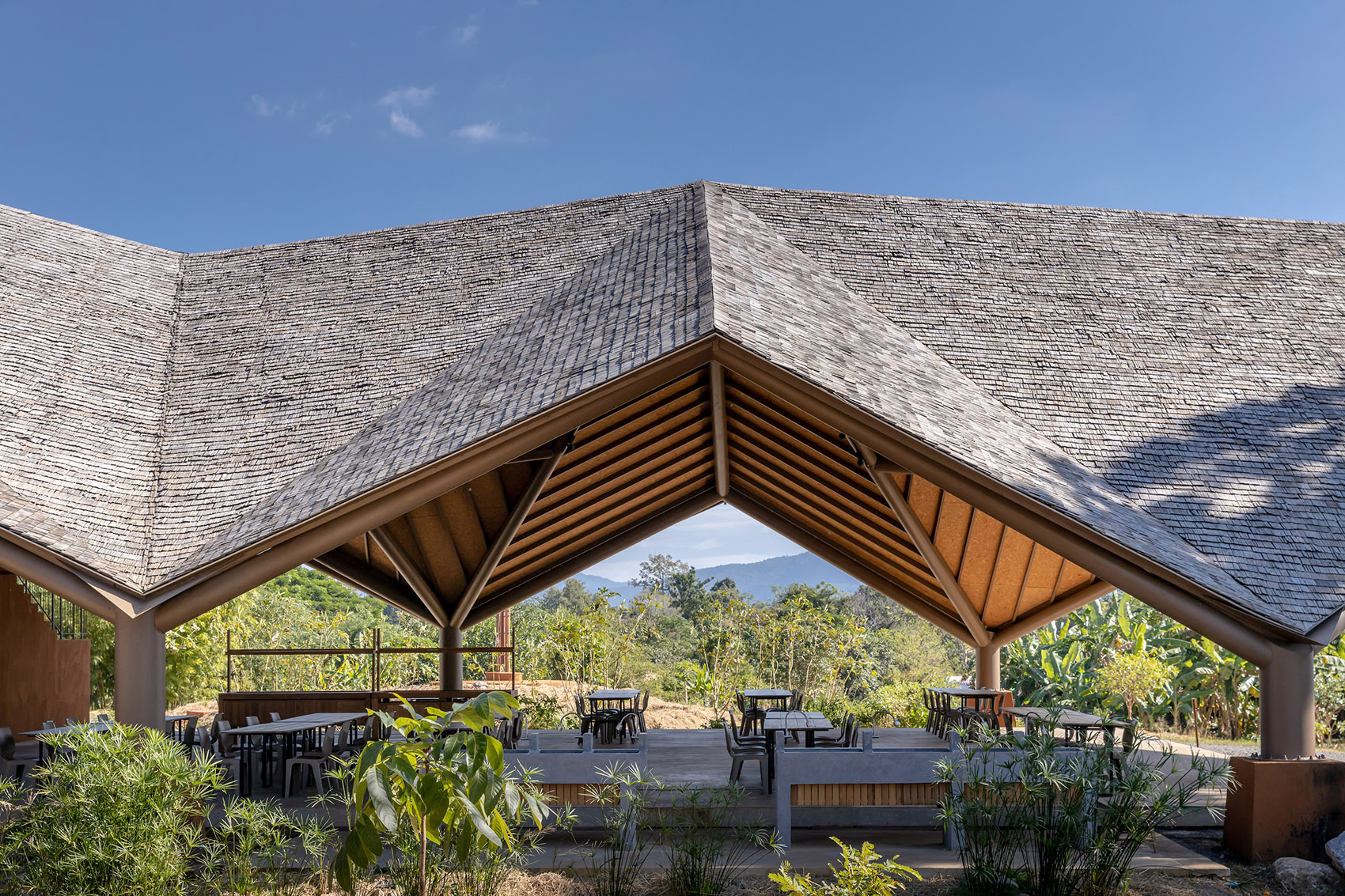
▼巨大的室外餐厅,spacious outdoor canteen ©Ketsiree Wongwan
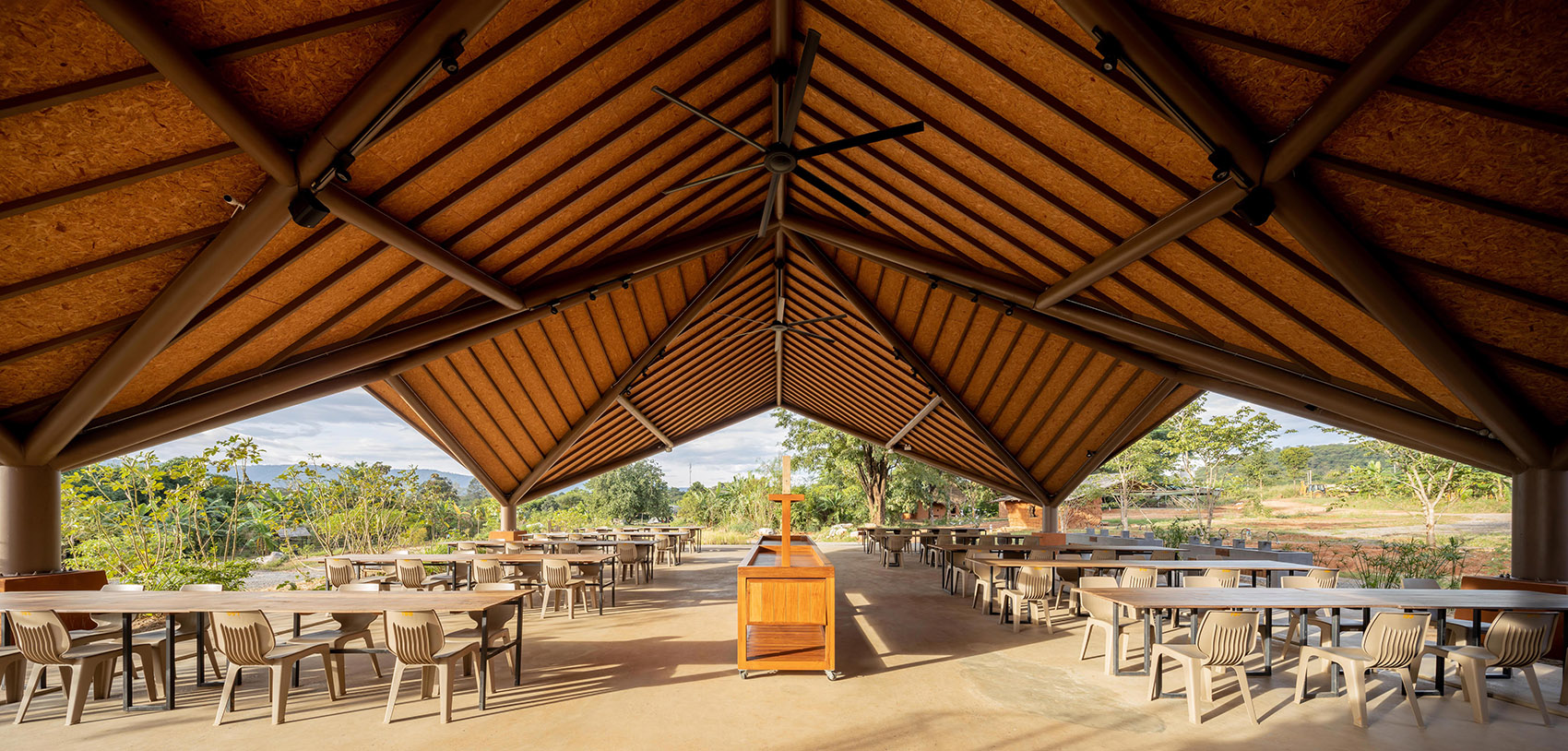
▼屋顶和结构细部,details of the roof and structure ©Ketsiree Wongwan

活动中心反映了建筑是一门活着的科学,必须随新的科技发展改变和成长,回应逐渐变化的需求和行为。
The activity center reflects the beliefs that architecture is a living science that must transform and grow with new development of technology in response to evolving human needs and behaviors.
▼夜景,night view ©Ketsiree Wongwan


▼施工过程,运用当地材料和工艺,construction process, using local craftsmanship’s and materials ©Vin Varavarn Architects
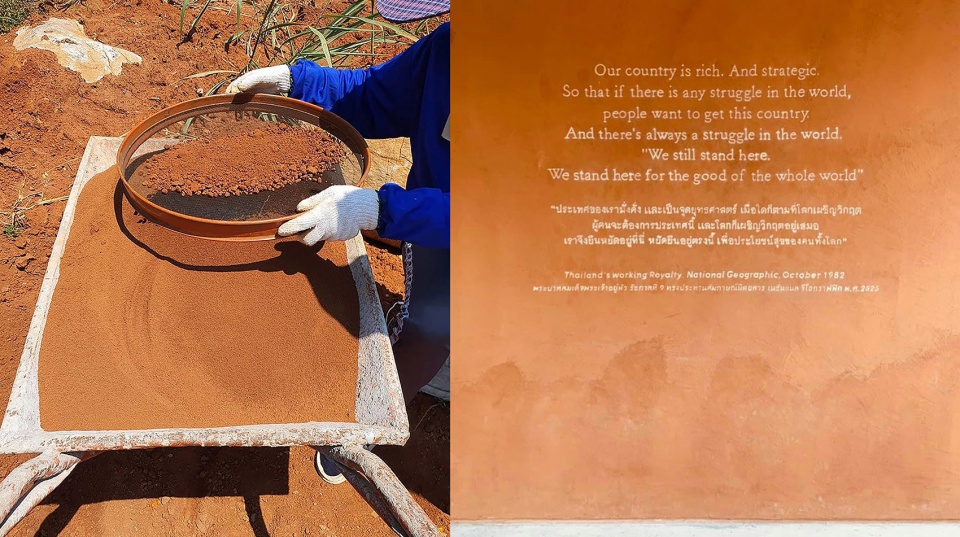

▼一层平面图,first floor plan ©Vin Varavarn Architects

▼二层平面图,second floor plan ©Vin Varavarn Architects
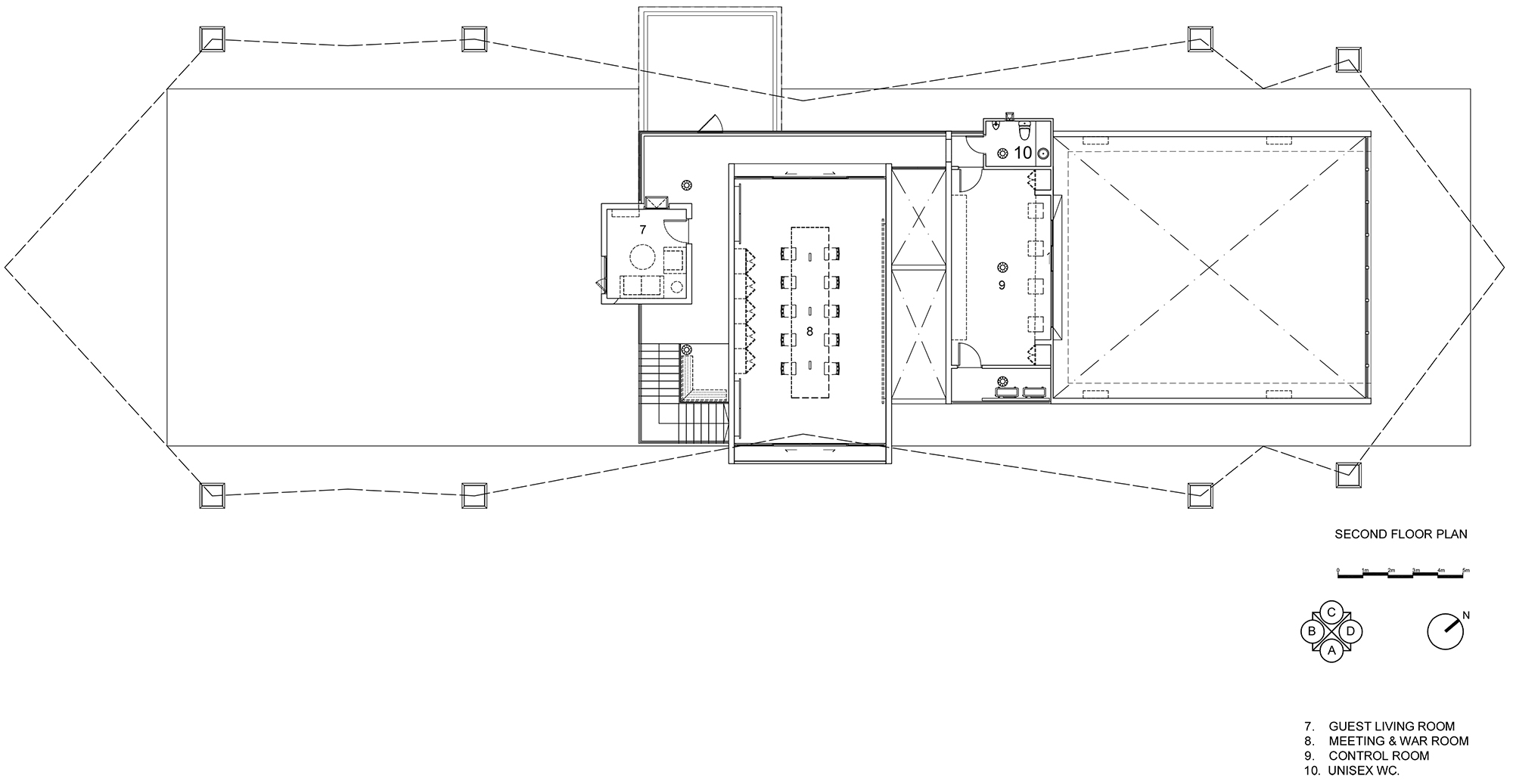
▼立面图,elevations ©Vin Varavarn Architects



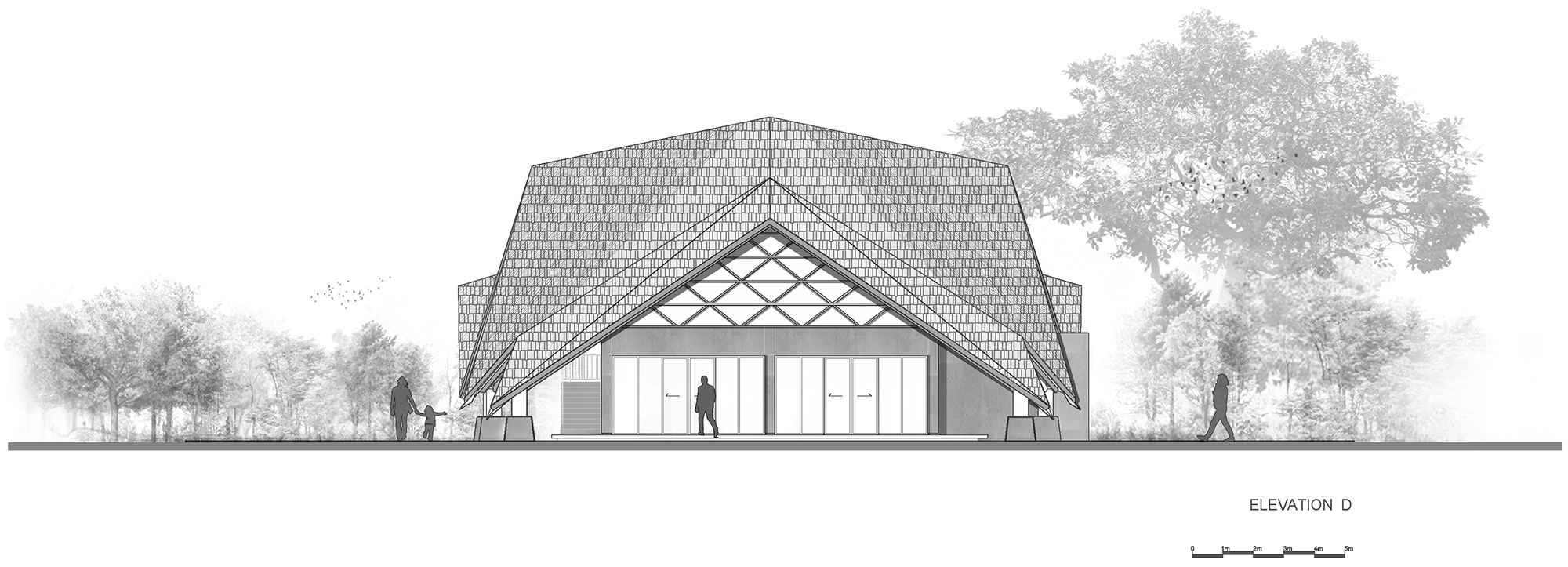
Project Owner: T.C. Pharma-Chem Company Limited Architecture: Vin Varavarn Architects Interior Design: Vin Varavarn Architects Engineers: Site 83 Engineering Studio Contractor: Sutham Rattanadet Construction team Photographer: Ketsiree Wongwan
▼项目更多图片
